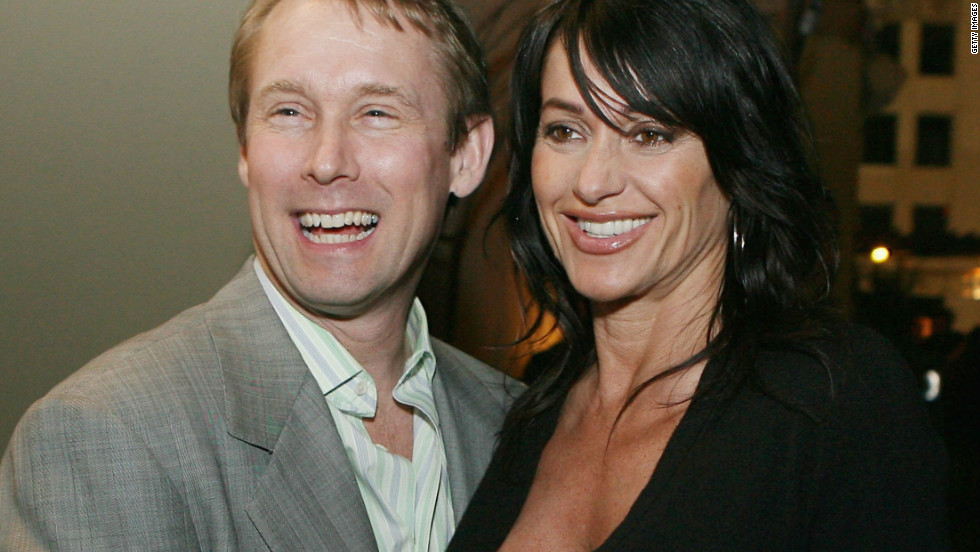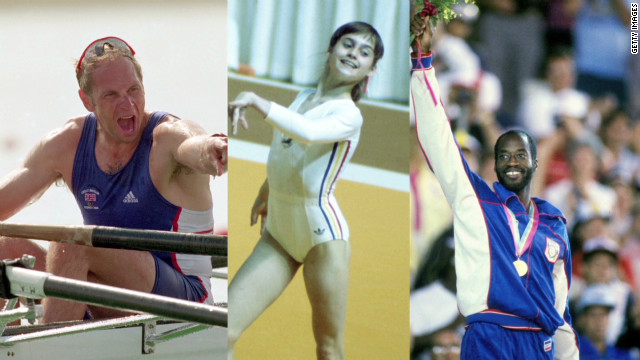Story highlights
- Nadia Comaneci was first gymnast to achieve perfect score of 10 in Olympics
- Competing for Romania she won three golds in 1976 Montreal Games
- Two further golds followed at Moscow Olympics in 1980
- She became a naturalized citizen of United States in 2001
Nadia Comaneci will forever be remembered as the first gymnast to achieve the perfect score of 10 in Olympic competition on the way to winning three gold medals at the 1976 Montreal Games.
Comaneci, who was just 14, went into the Olympics with admittedly "very, very low expectations" -- but in the space of a few short days became one of the most recognizable athletes on the planet.
Competing for Romania, she was awarded seven scores of 10 during the course of the competition as she took gold in the uneven bars, beam and all-round disciplines, backed up by a silver in the team event and bronze on the floor.
"It's hard to believe it's 36 years since I did that, it doesn't feel that long, but it is. I remember everything, all the routines," she said in an interview for CNN's Human to Hero series.
Coached by the famous combination of Bela and Marta Karolyi, who trained many gymnastics champions, Comaneci went on to claim two more gold medals at the 1980 Olympics in Moscow and captured two world championship golds and nine at European championship level.
She retired from competition in 1981 and turned to coaching, but in 1989, shortly before the revolution which other threw Romanian president Nicolae Ceaucescu, Comaneci defected to the United States.
In 1994 she became engaged to American gymnast Bart Conner, who had first met her back in 1976. They married in 1996 in Bucharest as she returned to her native country for the first time since defecting.
Comaneci became a U.S. citizen in 2001 and is still involved in gymnastics through an academy she runs with Conner, while holding a number of honorary positions with the Romanian and international federations.
Early years
Spotted by the Karolyis at the age of six, Comaneci started training at their academy in her hometown of Onesti.
"I didn't know I wanted to be a gymnast, I was just introduced to the gym," she said. "I loved the place because it looked like a hi-tech playground with mats and a lot of things I can hang from.
"But I like the competition. And probably if I didn't do gymnastics I would have done a different sport and hopefully I would have been good enough."
That competitive edge helped her burst onto the international scene with four golds at the European championships in Norway in 1975, and the following year came Olympic immortality.
Inspirations
In a golden era for women's gymnastics, the 1972 Olympics in Munich featured two competitors who were a big influence on Comaneci as she watched at home in Romania.
She admired the graceful Ludmilla Tourischeva, who won the all-round gold title, but it was another Soviet Union entrant, the diminutive Olga Korbut, who captured her imagination -- and that of the international audience -- in winning three gold medals.
"Olga Korbut was the famous gymnast in that time, but I was watching her in the gymnastics and I said to myself, 'I hope one day I will be like her,' " said Comaneci.
Four years later they competed against each other in Montreal, with Korbut winning gold as part of a Russian team which relegated Romania to silver.
Perfection
While Comaneci missed out on that team gold, it was her performances in the individual and all-round disciplines that catapulted the teenager to fame.
Competing in the uneven bars final, Comaneci first achieved perfection, a mark of 10 from the judges.
But there was an element of farce as she awaited her score. "First of all it was not 10, it was a one point zero zero because the computers couldn't cope!" she recalled.
"They were not prepared for the 10, so they didn't make enough space after the decimal to be able to accommodate the 10.
"They said it was a one point zero zero or a hundred, which meant nothing in gymnastics, or a one is ... a one is a really bad score."
After the technical glitch was sorted, Comaneci was able to celebrate with her teammates, but in contrast to the emotional Korbut, she rarely showed emotion during competition and was the butt of some criticism for her demeanor.
"I always said that I was the kind of person who didn't smile all the time, but I did smile at the end of the routine," Comaneci said.
"I think that when you are on a four-inch balance beam, you don't care about laughing or smiling or waving to the crowd because you're going to be down in a second."
Looking back on her feat, the gymnastics equivalent of the first four-minute mile in athletics, Comaneci almost downplays her achievement.
"People ask me what the definition of perfection, I said it's none, there is no definition of perfection. At some particular time when I was 14 years old, I've done something that people didn't expect," she said.
"It's a ladder that you climb in life, and I got there first."
Philosophy
Comaneci is aware that, like Korbut before her, she inspired a generation of gymnasts, but she believes they should stamp their own mark on their career.
"I don't think you should replicate what I've done, everybody has to be unique and do their own thing," Comaneci said.
"I think that the kids should have role models, but I don't think you should duplicate anybody. You should create your own thing."
Comaneci spent many hours of training from an early age to win her gold medals, and says that is still the recipe for success.
"You have to have a lot of passion for what you do, to be able to work hard and to have a lot of motivation because you're going to go to places that you're never going to believe."

























